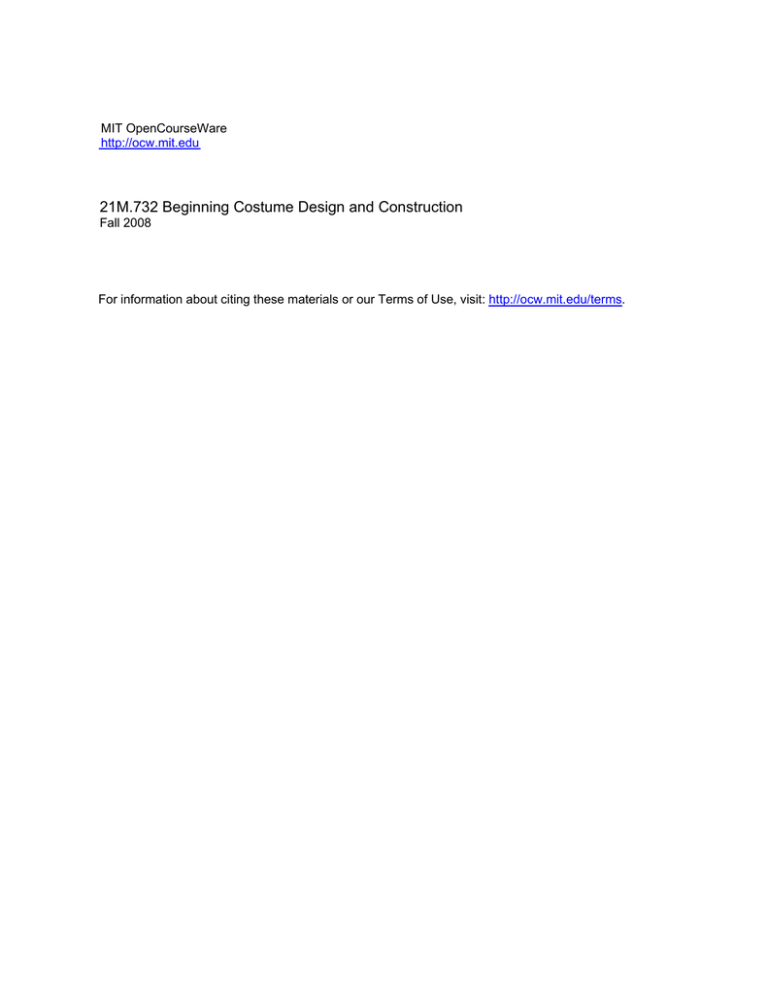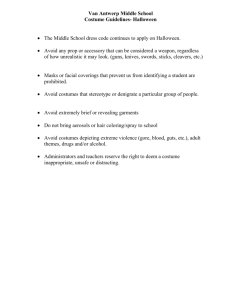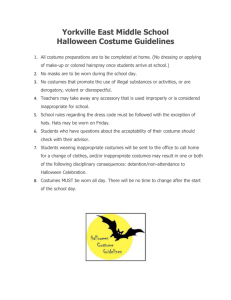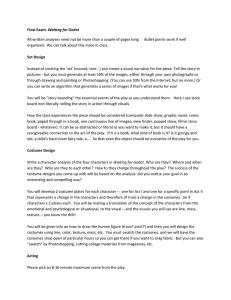21M.732 Beginning Costume Design and Construction MIT OpenCourseWare Fall 2008
advertisement

MIT OpenCourseWare http://ocw.mit.edu 21M.732 Beginning Costume Design and Construction Fall 2008 For information about citing these materials or our Terms of Use, visit: http://ocw.mit.edu/terms. BASIC FUNCTION OF COSTUMES I. Defining Character – differences between characters must be clearly visible to audience, even when other characters are confused. What does an audience need to know? 1. Defining a Character A. Setting a character in time and space 1) Historical period 2) Geographical or imaginary place B. Establish approximate age and gender of character 1) Wigs, hemlines, fabrics, colors, fit, makeup C. Establish rank or social status 1) Even in plays without royalty there are social and economic hierarchies D. Establish personality 1) Nora in Doll’s House 2) Sometimes costume must belie character to contrast with what that character pretends to be E. Reflect changes – richer, poorer, older, injured, fatter, etc. 1) Change costume 2) Alteration of costume a) distressing 2. Supporting Theme, Concept, and Mood A. Theme – play exists because playwright has thought to express. Playwright’s comment or point of view is the theme. B. Concept – director’s interpretation of the theme. Costumes must express director’s concept. 1) Concept based on study of script and action/language of play is organic 2) Concept found elsewhere and applied to surface of play C. Mood – emotional feeling which pervades the experience 1) Melancholy, joy, anger, despair, etc. II. How the Costumes Support Theme, Concept, Mood 1. Style – the manner or mode in which the costumes are created to best interpret the mood and concept A. Realism – as close to actual dress as the demands of play and theatrical values will allow B. Stylization – clothes depart from real clothes in some obvious way 1) Exaggeration of shape, silhouette, etc. 2) Distillation of period 3) Mixing of periods 4) Abstraction C. Color 1) Individual 2) Whole picture D. Scale – size of an object relative to a norm or other related objects 1) Realistic 2) Exaggerated larger or smaller (horror, humor, etc.) E. Texture





